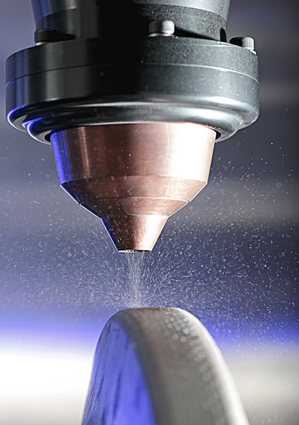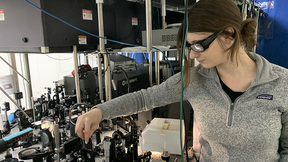Lab wins sixth R&D 100 award
 (Download Image)
(Download Image)
Glassy alloy powder is delivered onto a metal substrate that is then fused to the substrate with lasers to form a NanoSHIELD coating. Photo courtesy of Oak Ridge National Laboratory.
It has been determined that the Laboratory won an additional R&D 100 award this year, giving LLNL six awards.
This year's latest award brings the Lab's total to 143 since it began competing in 1978.
The most recent award is for NanoSHIELD, a new coating material developed by Oak Ridge National Laboratory, LLNL, Carpenter Technology Corp. of Bridgeville, Pa., and the Colorado School of Mines.
The Livermore work on the award was performed by Frank Wong, a nuclear engineer in the Physical & Life Science Directorate's Condensed Matter and Materials Division. Wong is matrixed to the Global Security Principal Directorate.
NanoSHIELD extends the life by more than 20 percent for costly tool steel components used in high wear applications, such as tunnel boring, construction, drilling, industrial rock crushing, and earth excavation.
The NanoSHIELD coating, short for Nano Super Hard InExpensive Laser Deposited Coatings, is created by using lasers to fuse glassy iron-based powders with high carbon and boron content onto the metal components. It is as hard as tungsten carbide-cobalt composites -- at half the price.
In full-scale field tests at the Combined Sewer Overflow Tunnel Project in Atlanta, Ga., several disc cutters on the tunnel boring machine (TBM) were replaced with NanoSHIELD-coated discs.
Normally, disc cutters on TBMs only survive one five-foot advance, also called a "push." The NanoSHIELD-coated discs survived 13 pushes without cracking or spalling.
According to the Colorado School of Mines, in 25 years of testing, and research and development on disc cutter coatings, the NanoSHIELD-coated cutters were the first ones where the coating did not spall or fracture after one pass during actual rock cutting.
Contact
Stephen P Wampler[email protected]
925-423-3107
Tags
ScienceFeatured Articles







